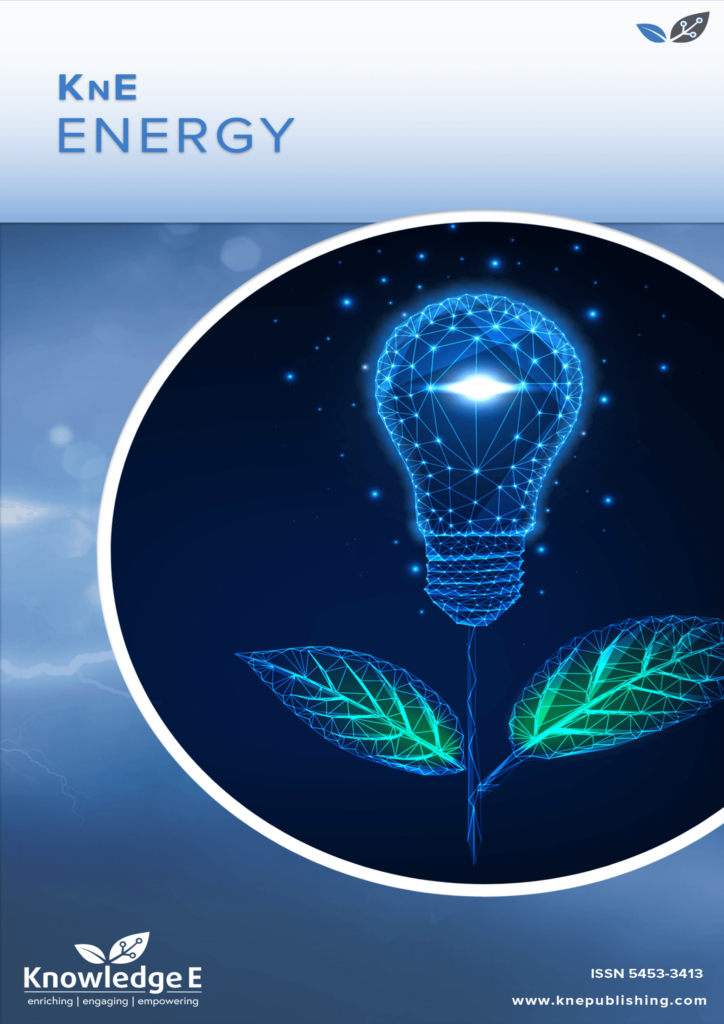
KnE Energy
ISSN: 2413-5453
The latest conference proceedings on energy science, applications and resources
Porous Silicon Photonic Crystal as a Substrate for High Efficiency Biosensing
Published date:Apr 17 2018
Journal Title: KnE Energy
Issue title: The 2nd International Symposium "Physics, Engineering and Technologies for Biomedicine"
Pages:69–74
Authors:
Abstract:
Photonic crystals offer great possibilities for the improvement of performance of different kinds of devices. Due to the ability to control the light propagation and to change optical properties via interaction with the media photonic crystals have been widely used to increase the sensitivity of biosensing in many experimental setups. Among them some of the most interesting for practical applications are one-dimensional porous silicon photonic crystals. They could be easily fabricated, have big surface area, high sorption abilities, and have been shown to be able to change the emission of embedded luminophores. In this study we have fabricatedand performed the comprehensive investigation of the properties of hybrid system consisting of the porous silicon one-dimensional photonic crystals embedded with semiconductor quantum dots as the luminophores. We have demonstrated the ability of these systems to enhance the photoluminescence of luminophores and serve as the substrate for the high efficient biosensing.
Keywords: Porous silicon, microcavity, quantum dots, luminescence enhancement
References:
[1] U. Resch-Genger, M. Grabolle, S. Cavaliere-Jaricot, R. Nitschke, and T. Nann, “Quantum dots versus organic dyes as fluorescent labels.,” Nat. Methods, vol. 5, no. 9, pp. 763–775, 2008.
[2] D. Dovzhenko, V. Terekhin, K. Vokhmincev, A. Sukhanova, and I. Nabiev, “Improvement of antigen detection efficiency with the use of two-dimensional photonic crystal as a substrate,” J. Phys. Conf. Ser., vol. 784, p. 12018, Jan. 2017.
[3] G. Gaur1, “Integrating Colloidal Quantum Dots with Porous Silicon for High Sensitivity Biosensing,” Mater. Res. Soc. Symp. Proc., vol. 1314, pp. 1–6, 2011.
[4] W. Zhi-Bing, Y. Yong-Hong, and Z. Jia-Yu, “Modified Spontaneous Emission from Dye Molecules inside a Photonic Crystal Microcavity,” Chinese Phys. Lett., vol. 24, no. 8, pp. 2252–2254, 2007.
[5] X. W. Yuan et al., “Spontaneous emission modulation of colloidal quantum dots via efficient coupling with hybrid plasmonic photonic crystal,” Opt. Express, vol. 22, no. 19, p. 23473, 2014.
[6] D. Dovzhenko, E. Osipov, I. Martynov, P. Linkov, and A. Chistyakov, “Enhancement of Spontaneous Emission from CdSe/CdS/ZnS Quantum Dots at the Edge of the Photonic Band Gap in a Porous Silicon Bragg Mirror,” Phys. Procedia, vol. 73, pp. 126–130, 2015.
[7] V. S. Lin, K. Motesharei, K. P. Dancil, M. J. Sailor, and M. R. Ghadiri, “A porous siliconbased optical interferometric biosensor.,” Science, vol. 278, no. October, pp. 840– 843, 1997.
[8] G. E. Kotkovskiy, Y. A. Kuzishchin, I. L. Martynov, A. A. Chistyakov, and I. Nabiev, “The photophysics of porous silicon: technological and biomedical implications,” Physical Chemistry Chemical Physics, vol. 14, no. 40. p. 13890, 2012.
[9] P. J. Reece, G. Lérondel, W. H. Zheng, and M. Gal, “Optical microcavities with subnanometer linewidths based on porous silicon,” Appl. Phys. Lett., vol. 81, no. 26, p. 4895, 2002.
[10] P. a. Snow, E. K. Squire, P. S. J. Russell, and L. T. Canham, “Vapor sensing using the optical properties of porous silicon Bragg mirrors,” J. Appl. Phys., vol. 86, no. 4, p. 1781, 1999.
[11] R. A. Rakhimov, E. V Osipov, D. S. Dovzhenko, I. L. Martynov, and A. A. Chistyakov, “Influence of electro-chemical etching parameters on the reflectance spectra of porous silicon rugate filters,” J. Phys. Conf. Ser., vol. 737, p. 12026, 2016.
[12] E. M. Purcell, “Purcell_1946_SpontaneousEmission.pdf,” Phys. Rev. B, vol. 69, p. 681, 1946.
[13] R. L. Smith and S. D. Collins, “Porous silicon formation mechanisms,” J. Appl. Phys., vol. 71, no. 8, 1992.
[14] P. Samokhvalov, P. Linkov, J. Michel, M. Molinari, and I. Nabiev, “Photoluminescence quantum yield of CdSe-ZnS/CdS/ZnS core-multishell quantum dots approaches 100% due to enhancement of charge carrier confinement,” SPIE Conf. Proc., vol. 8955, p. 89550S, 2014.
[15] D. S. Dovzhenko, I. L. Martynov, P. S. Samokhvalov, K. E. Mochalov, A. A. Chistyakov, and I. Nabiev, “Modulation of quantum dot photoluminescence in porous silicon photonic crystals as a function of the depth of their penetration,” Proc. SPIE, vol. 9885, no. Photonic Crystal Materials and Devices XII, p. 988507, 2016.
[16] N. A. Tokranova, S. W. Novak, J. Castracane, and I. A. Levitsky, “Deep Infiltration of Emissive Polymers into Mesoporous Silicon Microcavities: Nanoscale Confinement and Advanced Vapor Sensing,” J. Phys. Chem. C, vol. 117, no. 44, pp. 22667–22676, Nov. 2013.
[17] D. Dovzhenko, E. Osipov, I. Martynov, and P. Linkov, “Spatial and spectral properties of CdSe/CdS/ZnS quantum dots luminescence in one-dimensional photonic structures based on porous silicon,” Phys. Chem. Appl. nanostructures, pp. 144–147, 2015.